The Alhambra gardens name is really Generalife. Although the plants and flowers are not only located there. Throughout the Alhambra Palace grounds there are trees, shrubs, flowering plants and greenery.
After writing previous posts:
I´m completing this three part series with this piece about the plants and flowers at the Alhambra Palace.
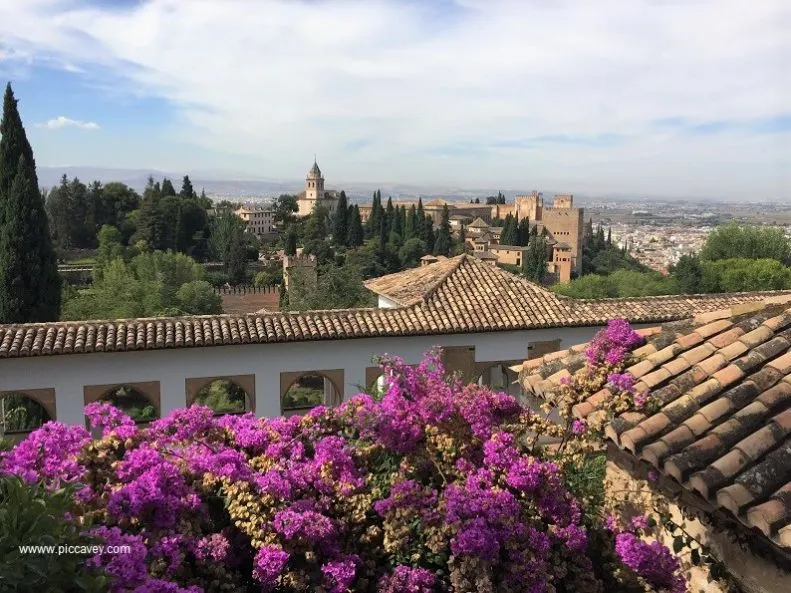
Secret guide to Alhambra gardens
The gardens at the Alhambra Palace cover a vast amount of space. Located in different areas of the grounds, they are not in one specific area. The most well known garden is the Generalife. These gardens have altered over the centuries and have influences from different periods of time.
Islamic garden design focuses on tranquility and contemplation. There are always elements of water and shade. Aromatic plants are an important feature too.
Medicinal Plants
The plants and flowers grown in the Alhambra were not just ornamental. Ivy, Laurel, Thyme, Lavender, Sage and Rosemary have been grown here for centuries. Planted for their medicinal properties.
Islamic herbalists incorporated findings from Greek medicine into their studies of plants. They even practiced an early form of preventative medicine using plant syrups and mixtures. Using leaves, roots, seeds and flowers to create medicines.
Iris was a multipurpose plant in the Alhambra gardens. Used in medicine as a stimulant and diuretic. Planted for its blue (and white) flowers. Extract from the Iris bulb was an ingredient in liqueurs and perfumes too.
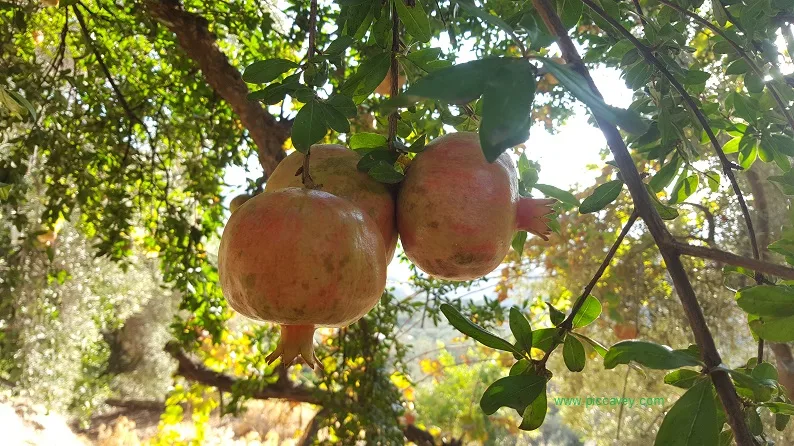
Vegetable Garden
Edible plants have been at this site since the middle ages. Supplying the palace, court and military. The Huerto is visible just below the Generalife Theatre on a long avenue. Another vegetable patch is just past the Partal area. The Paratas Bajas (close to the Paseo de las Torres) has crops such as broad beans garlic and artichokes.
Artichokes were not food but also ingredients in beers and tonics. Useful for their medicinal properties. Artichokes were grown by Greeks and Romans across the Mediterranean.
As well as kale, onions and cabbages, there were lots of fruit trees too. The pomegranate tree has delicate leaves and bright orange flowers. Flowering mid May until September, the fruit season is through Autumn months. The plant was also used for its strong colour in dyes for tanning and silk production.
Loquat, Quince, Walnut, Cherry and Almond trees. Other things that would have been growing there were pumpkins and watermelons.
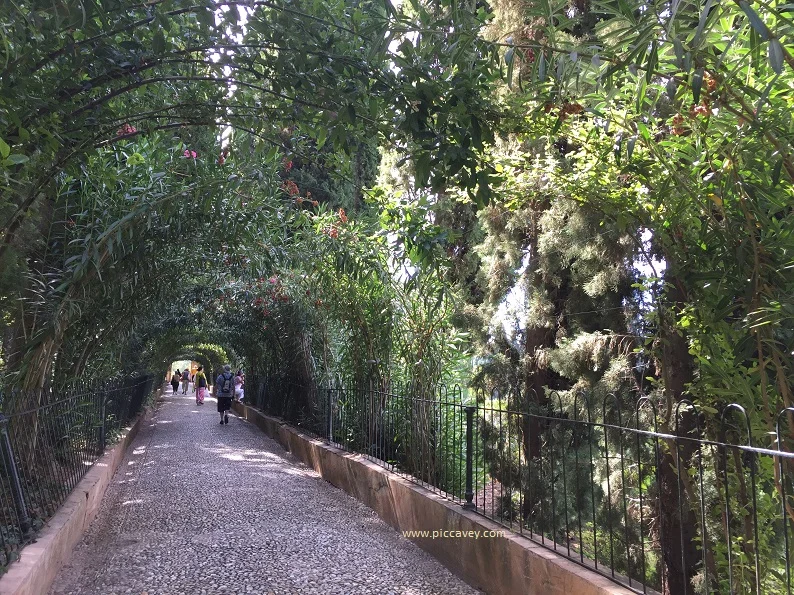
Ornamental Plants
Other plants were chosen for their colour or shape. The selection of flowering periods would cover different times and seasons. Pansies and marigolds would have been planted.
Even though you may seen bougainvillea at the Alhambra today, this was not introduced until the 18th century. Magnolia trees were a status symbol. This evergreen plant was expensive and difficult to obtain. There would have been several around the Alhambra palace gardens.
Cypress trees or Oleander bushes become architectural features. Lining walkways or create structure to different sections of the grounds. Cypress trees can live up to 600 years. Used since roman times, the arabs increased their use across Spain.
Box hedges give shape and structure in many gardens at the palace. Climbing plants and trailers are used to cover walls or uninteresting spaces. Examples are wisteria, ivy, jasmine, roses and trumpet creeper.
Alhambra Woods
In 1812 during the Peninsular War the Duke of Wellington had a large plantation of English elm trees planted at the Alhambra creating a dense forest. In fact the site was used as soldiers barracks and suffered some damage during the occupation of Napoleon. Luckily restoration of the affected building was undertaken in 1828 to preserve the monument we see today.
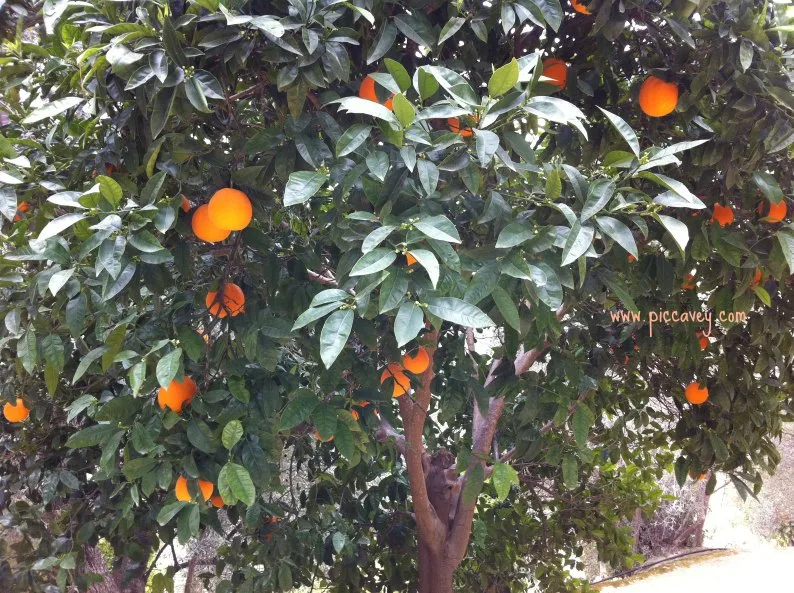
Aromatic Plants
Certain plants and trees were selected for their scent. Or even for their sensorial qualities, to uplift the spirit. Jasmine of course is perhaps the most obvious plant. Used in perfumes, it was also used in medicine to treat headaches or a sedative. (dried flower treatment)
Orange trees were appreciated for their fragrant blossom. Called Azahar in Spanish. Seville Orange trees were introduced from Asia by the Arabs around the 9th century and are a key feature of islamic gardens.

Roses at the Alhambra
Roses were very important in these gardens too. Used in many different ways, in climbing displays or planted in formal gardens. The damascus rose is still grown at the Alhambra now. Present in the original gardens, rose oil would have been used to perfume rugs and in treatments at the hammam.
Lavender, rosemary and thyme were all fragrant and medicinal plants popular throughout history. At the Alhambra Almond and horse chestnut trees were also present specially for their aroma.
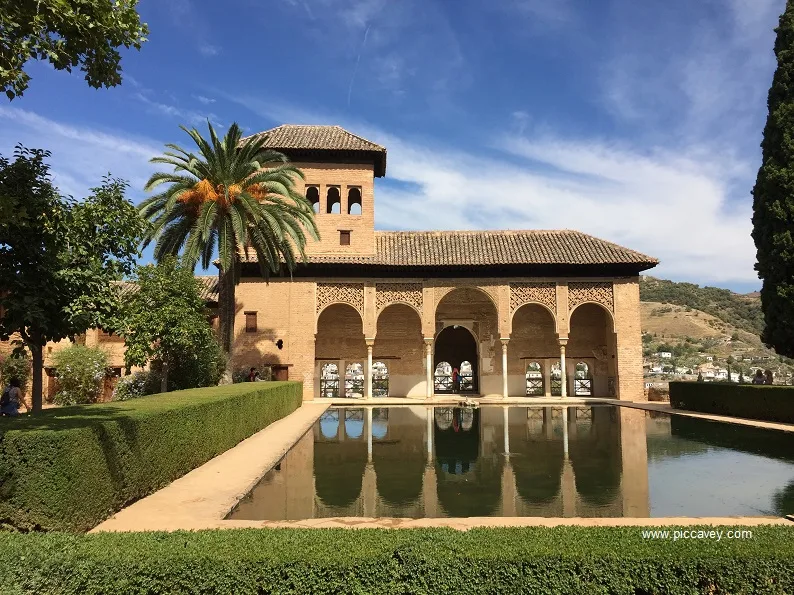
Partal
The large pool outside the Palacio del Partal dominates the space, with the Oratory to one side. In fact this area of garden is probably the oldest that we visit in the present day. The Partal gardens are in two sections. Lower (seen above) and upper section (close to the Santa Maria de la Alhambra Church). This upper area used to be streets and buildings.
Connecting the main street ´Calle Real´ to the Partal and Nasrid palace. On the right next to the qubba (heading towards the garden exit) you may notice the large Crape myrtle tree with its pink blooms. Note in this upper section the waterlilies and frogs in the pond as you move upwards towards Calle Real.
Did you know that the palace used Waterlilies to create room scents?
The Generalife
The name of the Generalife comes from the arabic Jinnah al´ Arif – Garden of the illustrious ones. As we enter the Generalife the first part is the Patio de la Acequia. This islamic garden has altered since the 13th century. Although the main part of the original layout is still clear to see today.
The main focus is the water feature in this garden and the sensation of peace as you hear the movement of the water. The pomegranate trees and large bouganvillea are the most important plants to note in this section of the garden.
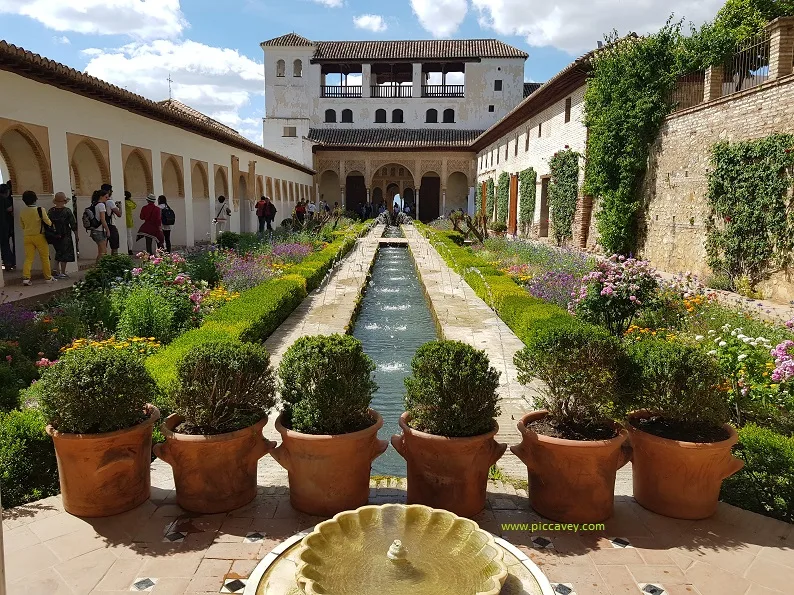
Generalife Lower garden
Continuing past the Patio de la Acequia and moving upwards we come to the Cypress of the Sultana. There could have been a medieval hammam on this site. These fountains were an addition from 16th century.
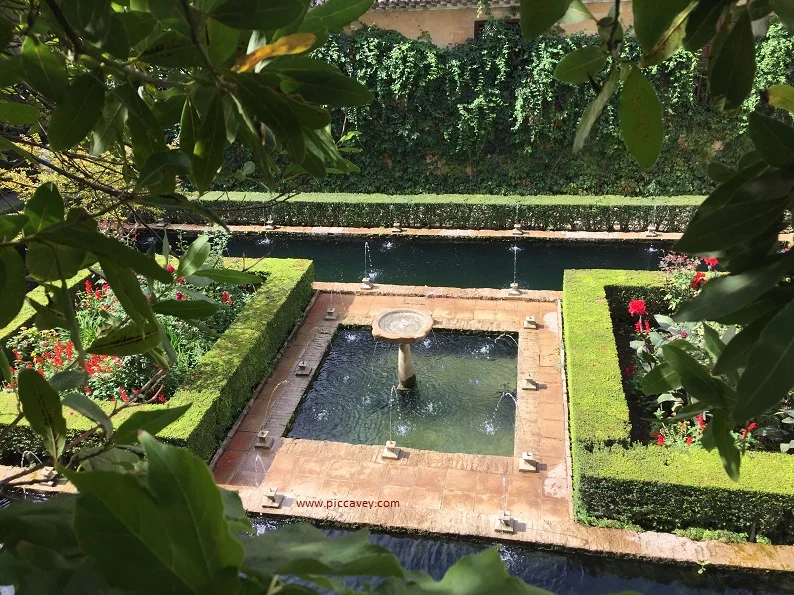
Generalife Upper Garden
Again moving up the stairs past the lions above the stone staircase, we come to the Upper Gardens. From here you can enjoy views of the Alhambra Palace and the city of Granada below. This section of gardens is the newest from 19th century and is a more formal garden design. With box hedges low fountains and a notable magnolia. This leads up to one of my highlights of the Generalife.
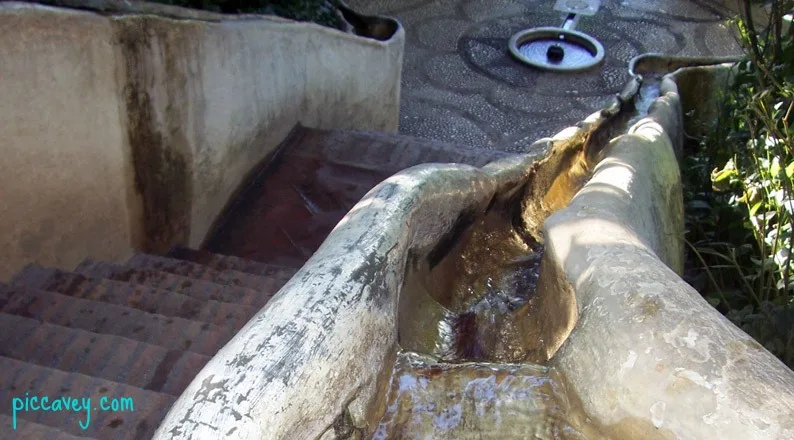
Escalera de Agua
The staircase known as Escalera de Agua has been a feature since the 16th century. Connecting the upper gardens and lower ones, this staircase has three flights. All covered with an archway of greenery to create shade.
The handrail has running water all the way along, creating a fresh atmosphere on hot summer days.
 Visiting the Alhambra Gardens
Visiting the Alhambra Gardens
The General Entrance ticket includes Generalife. However you may want to only visit the Generalife on a specific Alhambra Gardens Guided Tour.
If you have a special interest in the plants of the Alhambra this is the best option. Visiting the whole of the Alhambra and Generalife in one day can be overwhelming. So much information and lots of walking.
The Alhambra grounds are vast and the history is over 1000 years, a lot to take in on one day.
Practical Tips to see the Alhambra Gardens
- The Generalife Garden has a gated entrance for ticket holders only.
- If you have the general Alhambra ticket this includes a visit to Generalife on the same day.
- You need to show your ticket to enter the Generalife.
- There are lots of steps in the Generalife Gardens. They are on different levels.
- Most of the route is outside and some areas don´t have much shade. Use Sun Protection on warm days.
- In Summertime there are concerts at the Generalife Theatre. More details: International Music Dance Festival + Summer Flamenco in Granada
Travel Resources to Plan Your Visit
Here are a few resources to help you plan your visit to Granada:
-
- Find the perfect hotel or apartment on Booking.com
- Get the perfect Hire Car deal.
- Plan your trip to with these Guide Books
- Find out more from Local guides and Experiences.
- Don´t forget to arrange your Travel Insurance cover
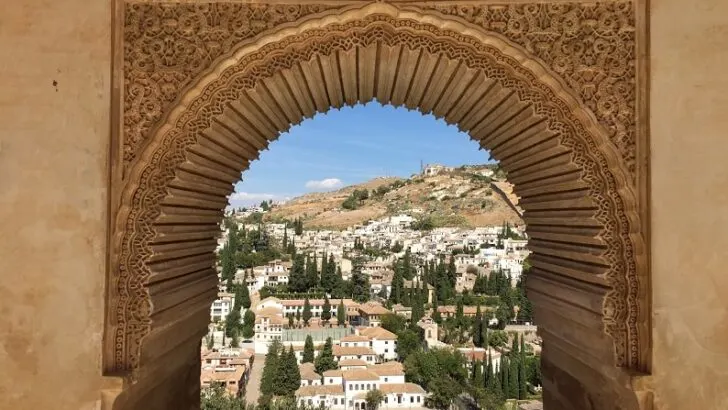
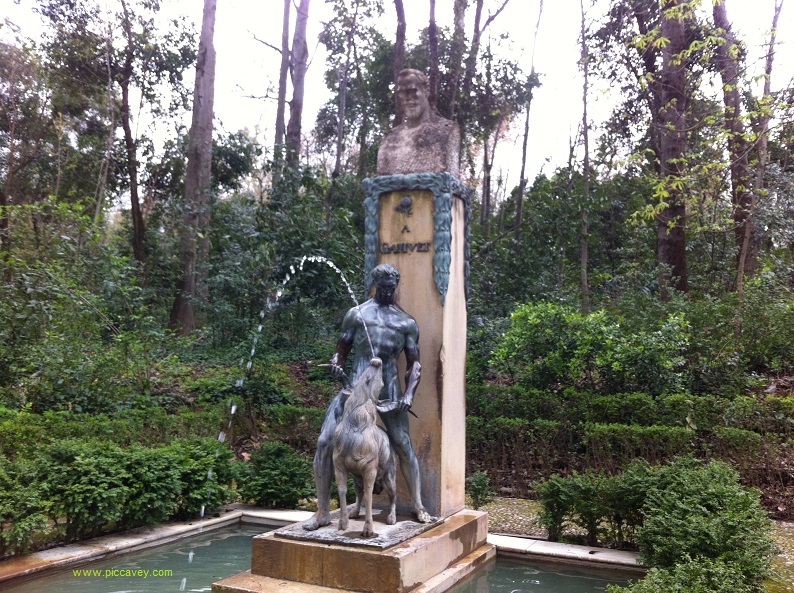
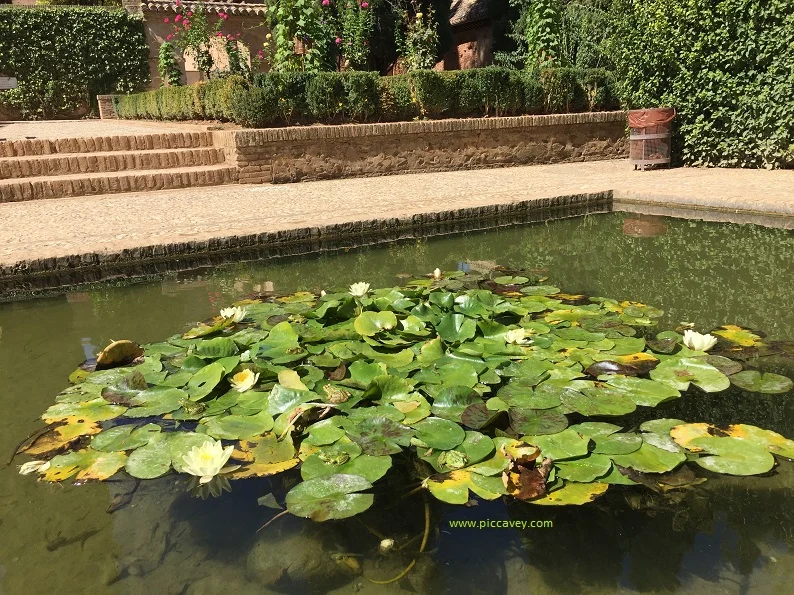

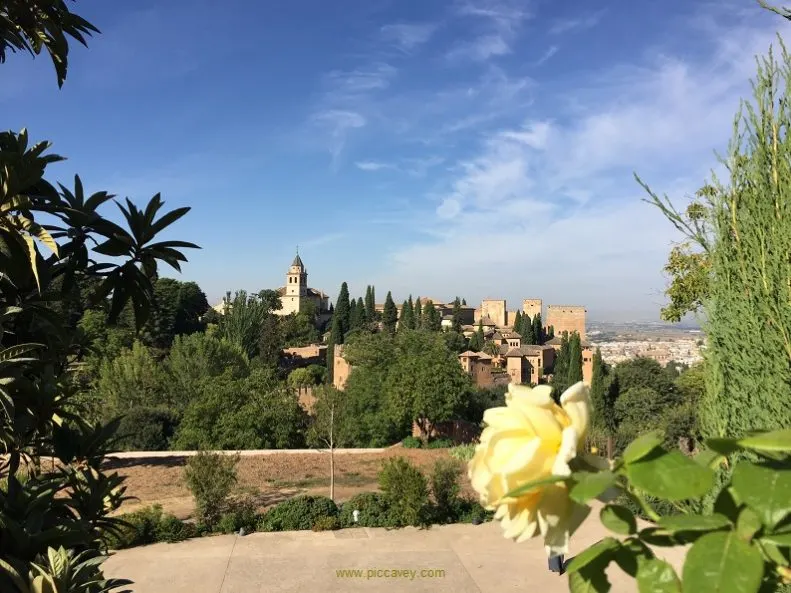

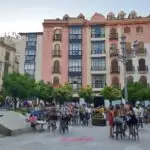
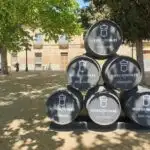

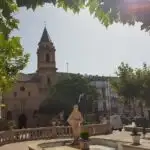
Sin duda la Alhambra es uno de los monumentos más bonitos de todo el mundo. Muchas gracias por un aporte tan original sobre los jardines de esta bella joya.
Lovely article on the Alhambra. I have a lovely Guide Book on the Alhambra it is the Official Guide book to the mentioned place. I was lucky to win the book on the Alhambra. IN a draw run by the Alhambra. Together with four other Books;
, One on the Albaicin. The book on the Alhambra is called” The Alhambra and the Generalife Official Guide Book”
347 pages. Worth reading. As the Alhambra interests me very much and I have never visited it
There are many books about the Alhambra, its such an inspiring place for many writers artists and photographers. Glad you enjoyed reading